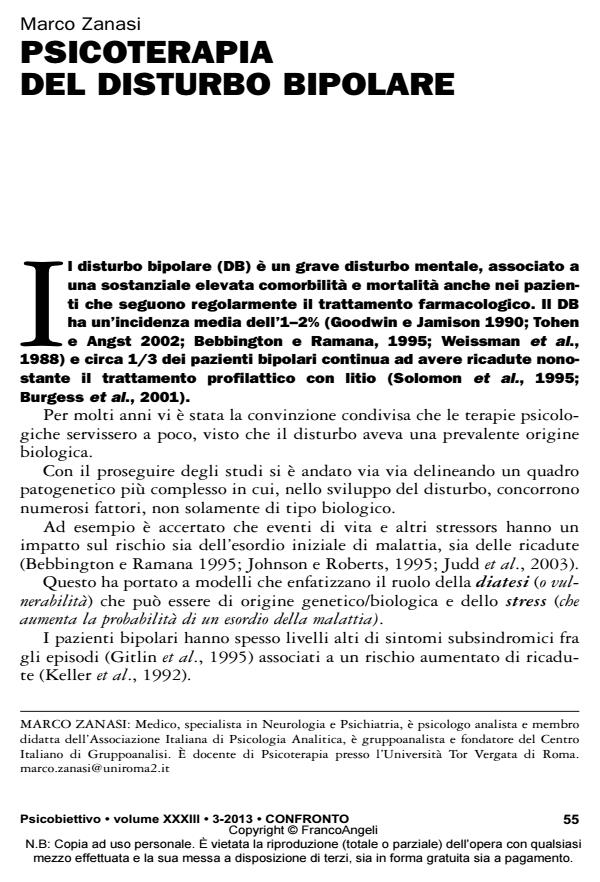Psicoterapia del disturbo bipolare
Journal title PSICOBIETTIVO
Author/s Marco Zanasi
Publishing Year 2014 Issue 2013/3
Language Italian Pages 19 P. 55-73 File size 147 KB
DOI 10.3280/PSOB2013-003004
DOI is like a bar code for intellectual property: to have more infomation
click here
Below, you can see the article first page
If you want to buy this article in PDF format, you can do it, following the instructions to buy download credits

FrancoAngeli is member of Publishers International Linking Association, Inc (PILA), a not-for-profit association which run the CrossRef service enabling links to and from online scholarly content.
The author, after a thorough inquiry on the latest research referring to cognitive impairment associated to bipolar disorder - completely undervalued until recently - sets out a review of the various psychotherapeutic approaches for the treatment of this widespread condition. Theoretical foundations, methods of intervention, strengths and exclusion criteria of each technique are presented in a comprehensive, albeit synthetic, mode. Extensive bibliography allows further laboration into the presented topics. The author, based on the data shown, concludes for the indisputable usefulness of various forms of psychotherapy in addition to pharmacotherapy in the treatment of all bipolar spectrum conditions, in any phase of the illness.
Keywords: Bipolar Disorder; Psychotherapy; Cognitive Impairment; Therapeutic Approach.
Marco Zanasi, Psicoterapia del disturbo bipolare in "PSICOBIETTIVO" 3/2013, pp 55-73, DOI: 10.3280/PSOB2013-003004